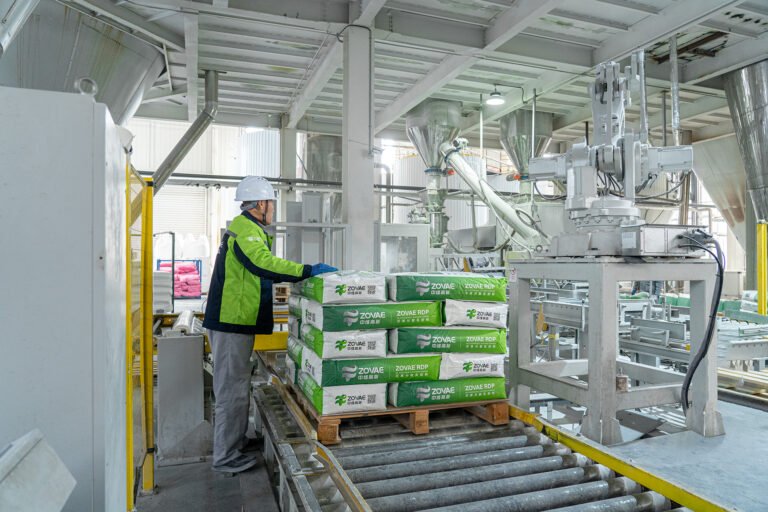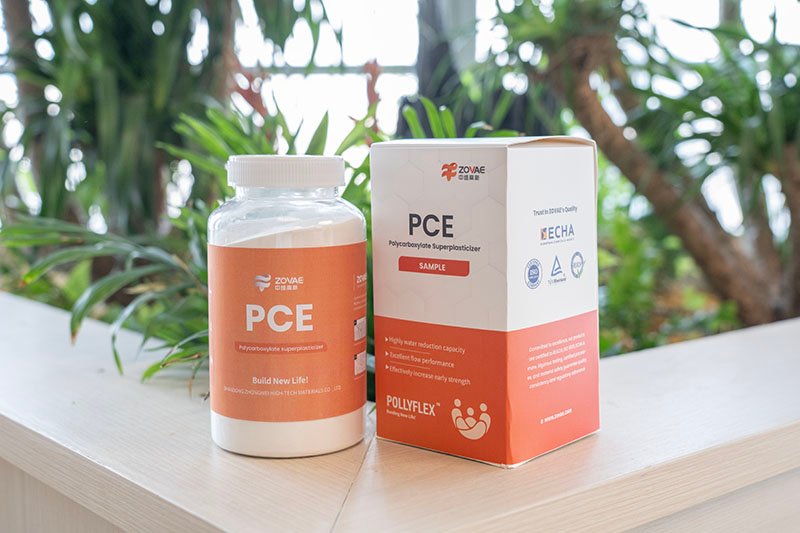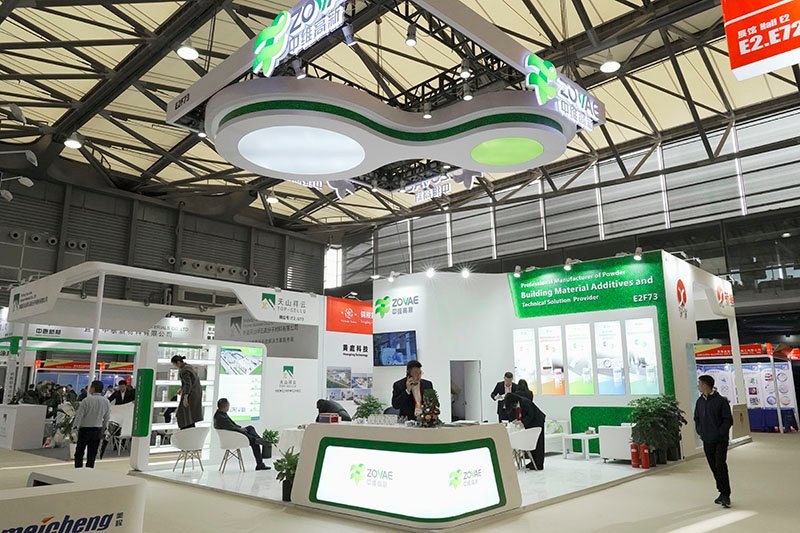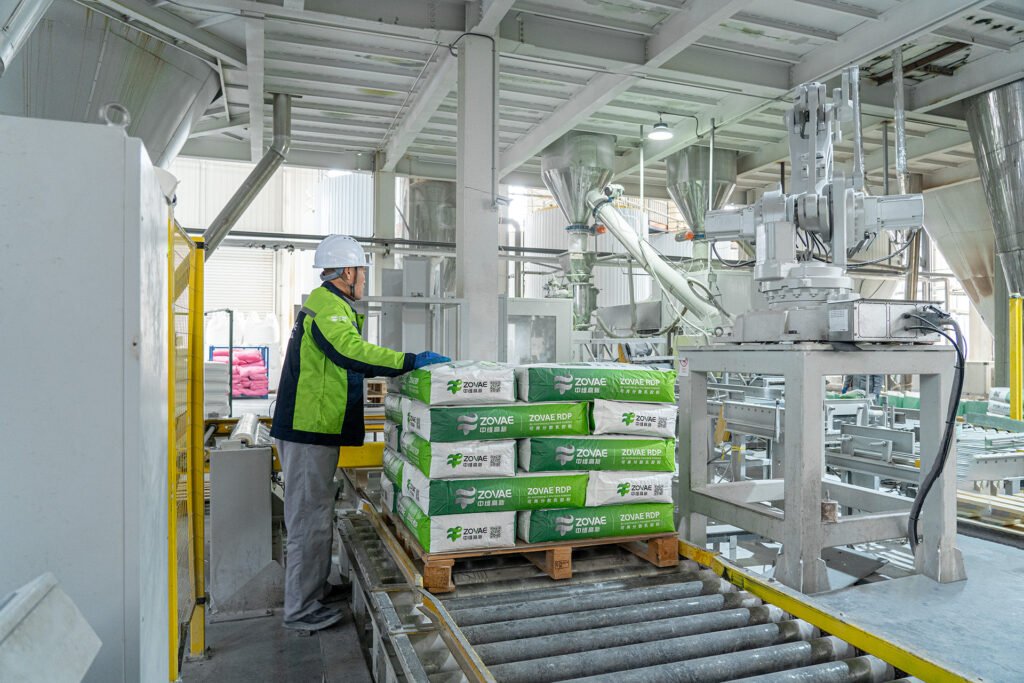
Merry Christmas ZOVAE
Wishing You Joy & Prosperity
Over the last three decades, superplasticizers—high-range water reducers—have become integral to high-performance concrete technology. Their ability to enhance workability at low water–cement ratios has enabled the production of stronger, more durable, and more sustainable concrete. Initially dominated by sulfonated naphthalene formaldehyde (SNF) and sulfonated melamine formaldehyde (SMF) , the market has shifted significantly toward polycarboxylate ether (PCE) superplasticizers, the so-called “third generation” of chemical admixtures.
The success of PCE-based admixtures is rooted in their unique molecular architecture, generally described as a comb-like polymer structure. The main chain carries anionic groups that attach to positively charged cement particle surfaces, while polyethylene oxide (PEO) side chains extend outward, creating extreme steric hindrance. This arrangement maximizes dispersion efficiency, yielding higher water reduction and longer workability retention compared to older technologies.
However, despite their superior performance profile, PCEs are not without drawbacks. Field experience, laboratory research, and quality control records reveal that certain challenges can limit their effectiveness or compromise concrete quality if not addressed. These shortcomings range from temperature sensitivity to compatibility issues with aggregate fines, high viscosity in some mix designs, and narrow functional suitability for extreme applications such as sub-zero concreting or ultra-long-range pumping.
Recognizing these limitations is not an attack on the technology but a necessary step toward optimizing its use. Awareness allows engineers, mix designers, and contractors to modify formulations, adjust dosages, control raw material quality, and implement mitigation strategies tailored to project demands.
This white paper presents a technical deep dive into the most frequently observed shortcomings of PCEs, exploring the scientific causes, practical field impacts, and engineering solutions for each. The focus is on ensuring the benefits of PCEs are maximized in practice while reducing the risk of mix instability, workability loss, or unexpected strength and durability deficits.
Polycarboxylate superplasticizers differ from earlier generations in both molecular structure and mode of action.
Structure–Function Relationship:
While these traits lead to higher dispersion efficiency and slump retention, they also increase sensitivity to environmental and material variables. Because PCE molecules are large and complex, their adsorption–desorption dynamics can be influenced by:
These interactions are central to many of the shortcomings explored below.
At elevated temperatures (above 30 °C), hydration reactions accelerate sharply. The dissolution of clinker phases and gypsum results in rapid ettringite formation, while continuous PCE adsorption onto freshly formed hydration products depletes active polymer in solution. In hot weather, this dynamic occurs faster than the controlled release rate designed into many PCE products, leading to early loss of dispersion capacity.
On a dam construction site in South Asia, a summer mix using standard PCE showed a slump drop from 200 mm to 80 mm in 45 minutes at 35 °C, compared to only 30 mm drop in winter.
PCE performance is not linear across temperature ranges. At low temperatures (<10 °C) hydration slows, polymer desorption rates are lower, and dispersion remains in effect much longer — sometimes delaying setting beyond specification. At high temperatures (>30 °C), effects reverse: slump retention curves shorten drastically.
A precast plant in Northern Europe noted that winter dosages at 0.25% provided 2+ hours slump retention, but summer required 0.35% with a summer-grade PCE to avoid 50% slump loss in 1 hour.
PCE product lines, though expanding, still lack broad single admixture solutions for:
High cement paste volume combined with fine SCMs (e.g., silica fume) increases the surface area for PCE adsorption, tightening the particle network. This cohesive matrix has high plastic viscosity, producing so-called “sticky” mixes.
An HPC pavement mix (w/c = 0.28) with 10% silica fume exhibited plastic viscosity 50% above the reference, requiring finishers to exert more effort for surface closure.
Clay minerals, especially montmorillonite and illite, have large specific surface areas and highly negative surface charges, which compete with cement particles for PCE adsorption. Even small increases in clay content drastically reduce PCE efficiency.
EN 933-9 sets clay content limits, but in some markets, sand sources exceed these due to insufficient washing.
M-Sand particles are angular, contain micro-fines, and have high roughness, all increasing water demand and potential slump loss. Reactive fines may also bind PCE molecules.
| Property | PCE | SNF/SMF |
|---|---|---|
| Water reduction | 25–35% | 15–25% |
| Slump retention | High (1–3 hrs) | Low–medium (<1 hr) |
| Heat sensitivity | High | Low |
| Clay tolerance | Low | Medium–high |
| M-Sand compatibility | Variable | Generally better |
| Specialized functionality | Limited without co-admixtures | Less critical |


Polycarboxylate superplasticizers have transformed concrete technology, delivering higher performance than earlier admixture generations. However, they also bring distinct vulnerabilities: temperature sensitivity, fineness/clay sensitivity, and limitations in extreme applications. By understanding these factors and applying targeted mix design, quality control, and formulation adjustments, professionals can overcome these shortcomings and fully leverage PCE benefits.


Please leave your contact information, and Zovae’s sales team will provide you with dedicated service.
